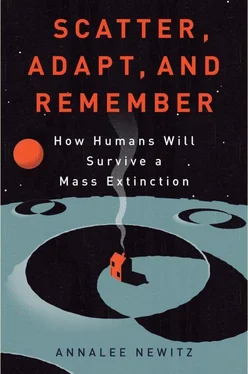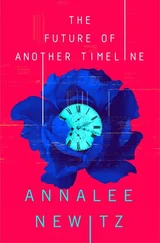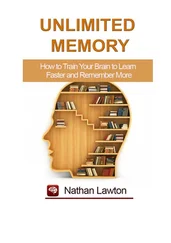“The construction of major transit projects such as metros and road tunnels is just a prelude for the true nature of underground development,” argue Dmitris Kaliampakos and Andreas Barnardos, two engineers who specialize in underground development at the National Technical University of Athens. In 2008, the two helped organize an international conference to deal with questions about building underground. Over the past few decades, many cities have witnessed the proliferation of underground building projects, ranging from individual homes expanding underground to RÉSO-like structures such as the one Amsterdam considered building beneath its canals in the late 2000s. “The main driving force behind the process is the continuously growing urban areas,” write Kaliampakos and Barnardos. Building underground saves energy, they point out, because subsurface temperatures stay comfortable year-round; in addition, it allows cities to expand without destroying historic places or producing suburban sprawl. The problem is that most cities don’t have a lot of regulations and codes in place to help developers make these underground spaces. It’s hard for real-estate agents to value underground spaces that don’t exist, and most laws don’t make it clear who owns the land below our feet. These factors, along with the cost of building down, make developers shy about breaking ground.
Still, the laws are catching up with urban needs. And geologists like Gudmundsson are working with engineers to provide accurate maps of the kinds of rocks and fissures that lurk beneath us, so that we can plan the right spots to tunnel below. As John Zacharias said, “We are going to have a lot more space underground in future, especially as cities build new transportation systems underground.” He predicted that the movements below will also be related to concerns about energy. “We will need places to store water, especially as cities get round to recycling water,” he asserted. “Power plants will go underground. Theaters and libraries are already there. The future city is three-dimensional, and all big cities will be looking to see how they can better use the underground resource.”
As more cities send vital roots underground, we create a world that is inadvertently preparing itself for a radiation emergency. The more we make the subsurface livable, the more likely it is that humans will survive to see the next several millennia.
In this description of underground cities, we’ve considered city designs that would make us comfortable living underground, and we’ve learned that our worst enemy underground will be seeping water. But we’ve danced around the real issue we’ll confront in our radiation-proof cities: food. As the atmospheric scientist Alan Robock of Rutgers University points out in one of his many papers on nuclear winter, the biggest issue we’ll face may not be radiation at all. It will be starvation in the wake of extensive burning:
Smoke—especially black, sooty smoke from cities and industrial plants—would block sunlight for weeks or months over most of the Northern Hemisphere. And, if a nuclear holocaust occurred in the Northern Hemisphere in summer, it would affect much of the Southern Hemisphere as well. The cool, dark conditions at the earth’s surface would eliminate at least one growing season, resulting in a global famine.
Famine will also be a problem if one of our planet’s many megavolcanoes goes off. Ash and soot from such an enormous eruption would be blasted into the stratosphere, cutting the planet off from life-giving sunlight. The atmosphere would likely be full of sulfides and dust as well, both of which we’d want to avoid. So we might be looking at generations who live much of their lives underground. Our underground cities will have to be farms as well as shelters. In the next chapter, we’ll explore in greater detail how such farms might work.
Just like underground cities, farm cities are being built already, for many of the same reasons. Farm cities, like the green cities the urban geographer Richard Walker described in his book on San Francisco, are far more energy efficient and environmentally sustainable than the industrial cities most of us inhabit today. They are also less likely to suffer famine. In the next chapter, we’ll speculate about what cities might look like in a century or two. It’s possible they’ll be nearly indistinguishable from the natural surface of the planet.
WE’VE EXPLORED HOW cities are not static objects to be feared or admired, but are instead a living process that residents are changing all the time. Given how much bigger and more common cities are likely to become in the next hundred years, we’ll need to change them even further. Using predictive models from the fields of engineering and public health, our future city designers will plan safer, healthier cities that could allow us to survive natural disasters, pandemics, and even a radiation calamity that drives us underground. But there is a yet more radical way we’ll transform our cities. Over the next two centuries, we’ll probably convert urban spaces into biological organisms. By doing this, we make ourselves ready to prevent two of the biggest threats to human existence: starvation and environmental destruction.
Eventually this biological transformation might result in cities unlike any that have existed before. But for now, the best way to understand how such a shift would begin is by paying a visit to a city park or garden. These are places that we’ve built in the middle of cities to closely resemble the natural world. Usually they are just as engineered and artificial as the buildings surrounding them, but they do a lot of things that buildings typically can’t do, such as sequester carbon, absorb runoff storm water, and provide a cool, shady environment without drawing any energy from the grid. Many city parks today are reclamations of previously blighted areas. In Vancouver, Canada, for example, residents of the Fairview neighborhood converted a stretch of abandoned railroad tracks into dozens of garden plots where locals grow vegetables, flowers, and grains around the still-visible iron rails. And in New York City, a group of enthusiasts lobbied the city to let them convert a historic elevated-train structure into a park, which is now called (appropriately enough) the High Line. This once abandoned viaduct now features trees and grasses that seem to sprout from its concrete columns. People in these cities and many others throughout the world are slowly blanketing their barren causeways in habitats where plants and animals can thrive.
If we want the populations of our cities to survive, however, we’re going to have to do a lot more than plant flowers in lower Manhattan. We’ll need to transform urban areas into regions that can, as much as possible, feed themselves. That means prairie cities can’t rely on distant countries for bananas, nor can people living in desert outposts expect to get grain from fertile basins hundreds of kilometers away. More pressingly, we need to build cities that draw energy from their local ecosystems. By growing biofuels, and using sunlight for power, we make it less likely that humanity’s home planet will one day no longer sustain our need for energy. The biological city could provide us with food and energy security for millennia to come.
When I visited Cuba in the early 2000s, the best places to buy fresh food in Havana were street markets where urban farmers sold whatever they’d cultivated on roofs or in window boxes, sidewalk gardens, and yards. I wandered around in one of these markets, located in a large, airy warehouse where a couple of dozen people had set out their goods in baskets and on blankets. One woman was selling four eggs, a few eggplants, and a cellophane bag of spices. Another sat back on her heels behind a blanket heaped with greens. Street markets occupied a precarious legal position under communism because they encouraged private enterprise. But instead of cracking down, the Cuban government was paying agricultural engineers to study the most productive methods of urban farming. The need to prevent starvation overrode ideological concerns.
Читать дальше






![Аннали Ньюиц - Автономность [litres]](/books/424681/annali-nyuic-avtonomnost-litres-thumb.webp)





